In today’s rapidly evolving technological world, the success of your business depends on having strong leadership in technology. This is where the Chief Technology Officer (CTO) comes in. Unfortunately, many businesses don’t fully understand the role of a CTO, and it often remains undefined among other top executives.
The CTO is responsible for managing and deriving value from technology within the organization. Their role may vary depending on the company, but generally includes defining the technology vision and strategy, overseeing architecture, driving innovation, managing software development and infrastructure, and aligning technology decisions with the organization’s goals.
The CTO collaborates with other senior technology roles, such as the Chief Information Officer (CIO) or Chief Digital Officer (CDO), depending on the company’s size and focus. However, the CTO is usually the most senior technology position and reports directly to the CEO.
Traditionally, the CTO focused on internal technology needs, but now the role has expanded to include external-facing responsibilities, such as developing technology offerings for customers. This allows the CTO to be the public face of the company’s technology.
The key responsibilities of a CTO include:
- Developing a compelling technology strategy and vision.
- Understanding how technology can achieve company objectives.
- Representing the technology team at the executive level.
- Building and developing high-performing technical teams.
- Creating a positive tech culture and addressing important issues like ethics and diversity.
- Designing an effective operating model for technology.
- Managing technology resources and investments.
- Driving innovation through partnerships and staying ahead of emerging trends.
- Collaborating with the Chief Product Owner to develop technology-enabled products.
- Ensuring smooth operations of core business systems and managing technology vendors.
CTOs are primarily technologists, often with a background in technical or engineering roles. They need expertise in software architecture, leadership, IT management, product development, and project management. Additionally, they should have a broad understanding of emerging technology, digital products, design, and research and development (R&D).
Different organizations may require different types of CTOs based on their needs. These include:
- CTO as Digital Business Leader: Focused on using innovative technologies to transform the business model and drive innovation.
- CTO as Business Enabler: Responsible for optimizing and maintaining technology that supports the business model and operations.
- CTO as IT Innovator: Acts as a visionary and change agent for IT, leading architecture and innovation efforts.
- CTO as COO of IT: Oversees the day-to-day operations of IT, ensuring the delivery of services and managing vendor relationships.
In conclusion, The CTO role can be categorized into different personas based on organizational needs. They can be seen as a digital business leader, focused on leveraging innovative technologies to transform the business model, products, and services. Alternatively, they may serve as a business enabler, ensuring technology responsiveness to support the business model. Another persona is that of an IT innovator, acting as a visionary and change agent for IT within the organization. Lastly, there is the CTO as the Chief Operating Officer (COO) of IT, responsible for the day-to-day management of technology operations and the delivery of IT services.
The Chief Technology Officer is a key player in the organization’s technology leadership, responsible for driving innovation, shaping technology strategy, nurturing talent, ensuring effective technology governance, and managing core technology investments. Their expertise and guidance are essential for the organization’s success in today’s technology-driven business landscape. By staying abreast of emerging technology trends and continuously adapting, the CTO enables the organization to maintain a competitive edge and achieve its long-term goals.










